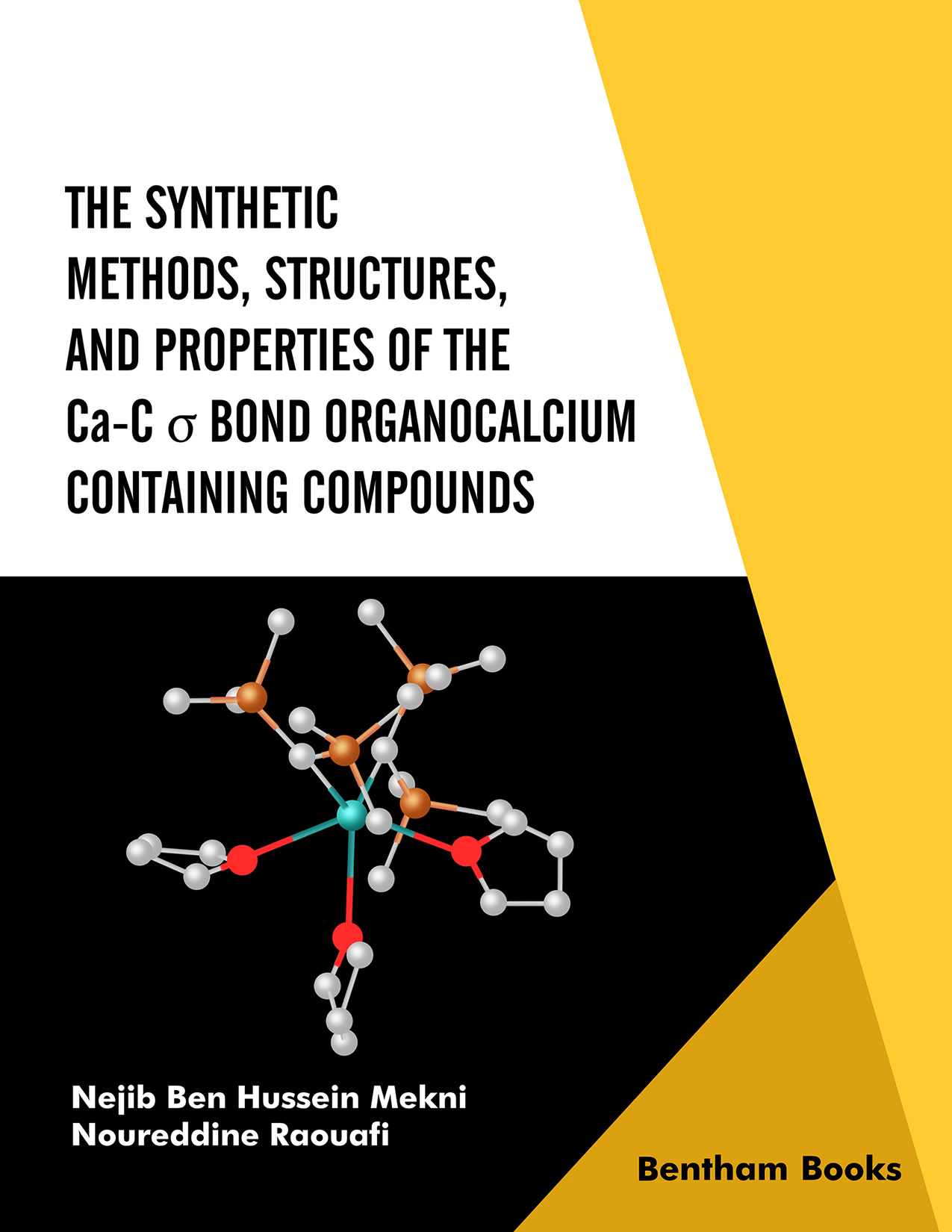Preface
The organocalcium compounds may include organic compounds that contain calcium atom(s) in their molecular formula, in which calcium is not bonded to carbon atoms, but generally bonded to a heteroatom (e. g. O, N, S, etc.) as an ionic bond or coordinated to heteroatoms as complexes.
As a contribution to the organometallic field and especially the organocalcium chemistry, the organocalcium compounds that contain Ca-C σ-bond are described here. The main problems encountered in the synthesis of such compounds compared to their homologous organomagnesium derivatives are expected to be due to the low reactivity of calcium element, the low solubility in common solvents and the high reactivity of the formed intermediates and products and their instability, are detailed and discussed.
We scanned the different Ca-C σ-bond containing organocalcium compounds and compared some of their properties to those of the alkaline and alkaline earth organometallic homologous compounds.
In this work, several important notes such as the restriction of the Ca-C double bond from real experimental examples are highlighted. Calcium may form two σ-bonds with two different carbon atoms in very difficult geometrical situations in the presence of high hindrances under the effect of bulky groups, but it cannot form a double bond. Besides, many interesting ideas such as degrading agent property, organocalcium spectroscopy and others are discussed.
In addition to research groups in the academic field of organometallic compounds, many other readers may benefit from this book reference as well as the catalyst, polymer, petroleum, pharmacology and pipeline fields, especially in the scarcity of reference books on the subject.
CONSENT FOR PUBLICATION
Not applicable.
CONFLICT OF INTEREST
The author declares no conflict of interest, financial or otherwise.
ACKNOWLEDGEMENTS
Declared none.
Nejib Ben Hussein Mekni
High Institute of Medical Technologies of Tunis
Tunisia.9, Avenue Docteur Zouhaier Essafi
1006, Tunis
Tunisia
&
Noureddine Raouafi
Faculty of Science of Tunis, University of Tunis El Manar
Tunisia.20, Rue de Tolède
2092 Tunis
Tunisia

